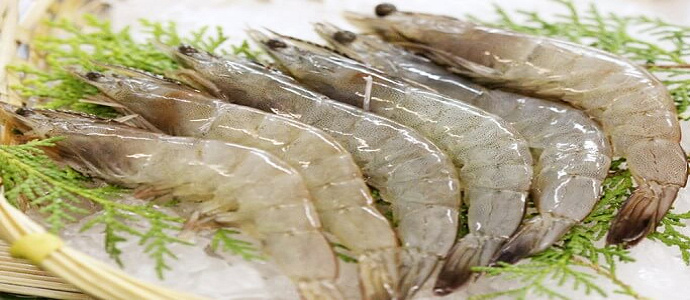Vanname shrimp farming is one of the most interested commodities in Indonesia, with production value reaching 640 thousand tons in 2013 and an increase of 13.9% per year. With a very high production value, Indonesia becomes the main shrimp producing country in ASEAN countries. Therefore, shrimp farming is one of the potential earning source giving good opportunities.
Banyuwangi Regency is one of the regions in East Java potential land for cultivation, either intensively, semi-intensive or traditional. Nowadays, many vanname shrimp ponds are cultivated with intensive, semi-intensive and traditional systems. One of the areas in Banyuwangi with traditional ponds mostly is in the Wringin Putih region, Muncar subdistrict.
Wringin Putih Village is located in Muncar Subdistrict, Banyuwangi Regency. Based on the geographical data of the village, the ponds in the village is approximately 70,000 ha and 40% of the them is traditional ponds. However, production for traditional ponds is still experiencing many obstacles so the production is declining.
One of the causes of the decline in shrimp production in traditional ponds is the lack of good land preparation, causing incomplete chemical and biological processes in the soil. The low production of natural feed in these ecosystems and the low quality of aquaculture water during activities causes the slow growth rate of shrimp. One of the causes of the decline in soil quality is due to the low potential value of redox.
Potential redox (Eh) is an index that states the quantity of electrons in a system. Oxidation-reduction is the reaction of electron transfer from an electron donor to an electron acceptor. The electron donor will oxidize due to the release of electrons, while the electron acceptor will be reduced due to the addition of electrons. This process takes place simultaneously, so it is often referred to as a redox reaction.
Potential redox is also influenced by the activity of micro-organisms as the activities of micro-organisms not only affect the transformation process of organic and inorganic compounds, but also affect acidity and soil potential redox.
Redox values is potential as an analysis to state soil chemical fertility which will later be linked to pH values. Changes in chemical properties include changes in potential redox and soil acidity which are the two main factors that are interrelated in influencing the solubility and availability of nutrients and their transformations in the soil which affect soil fertility.
This scientific data analysis is very necessary to be disseminated to traditional farmers in the village of Wringin Putih Muncar Banyuwangi. Analysis on how the effect of the difference in potential redox values in the soil preparation through analysis of the potential redox value of the soil with countermeasures techniques on potential redox soil is less than 200, because the potential redox values affect the readiness of the soil as a medium of aquaculture water that has an effect on water quality. One of the chemicals that can help increase the value of potential redox is Hydrogen Peroxide.
Hydrogen peroxide is a colorless, soluble solution in water and has a molecular weight of 34.01. It is antimicrobial because it has a broad spectrum of microorganisms including bacteria, yeast, mold, viruses and spore-forming microbes. Hydrogen peroxide is more effective against anaerobic bacteria because they do not produce catalase enzymes that can destroy peroxide (Filho and Ulrich, 2002).
Hydrogen peroxide also has the advantage of being environmentally friendly because its decomposition produces only water and oxygen, so often hydrogen peroxide is often used as a strong oxidizing chemical in degrading anaerobic organic matter and reducing the pathogenicity of microorganisms (Pedersen, 2009).
The results of observation from the vanname shrimp production on land with soil preparation in the Wringin Anom pond gave positive results, where the yield of shrimp production was far better compared to the production of the previous period. The improvement is 50% better if done with preparation of a potential redox value above 200.
Based on the harvest data at the end of the cultivation period, a higher yield of more than 50% compared to the period before the learning activities in this community service program. It concludes that land preparation technology along with soil improvement using technical analysis from ORP data give very positive contribution to the productivity of aquaculture activities. Land preparation using appropriate technology based on data will affect the smooth process of shrimp farming in the future. (*)
Author: Daruti Dinda Nindarwi
Complete article available at:
https://iopscience.iop.org/article/10.1088/1755-1315/441/1/012014





